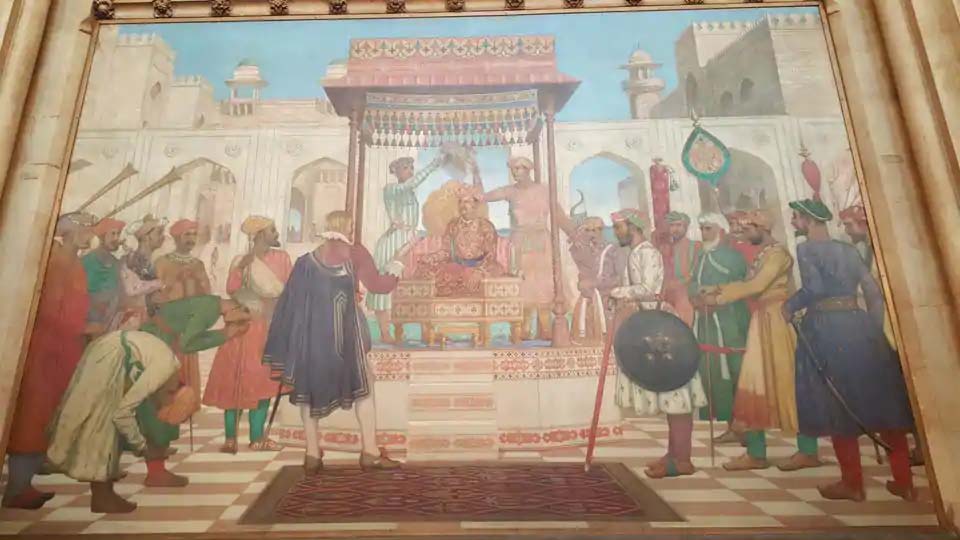A large mural painting in the UK parliament depicting a defining moment in early 17th century laying the foundation of British influence in India is being reviewed for its contemporary relevance in the context of the Black Lives Matter (BLM) campaign.
The painting by noted artist William Rothenstein (1872-1945) unveiled in 1927 is one of eight depicting important historical events as part of ‘The Building of Britain’ series in St Stephen’s Hall in the parliament complex, which has thousands of pieces of art, many with racist history.
The review follows demands as part of the BLM campaign to remove statues and symbols with links to racism and slavery from public places. Campaigners have identified several statues in London and elsewhere that they want removed, with local councils across the UK initiating similar reviews.
The Rothenstein painting depicts the first British diplomatic representative, Thomas Roe (1581-1644), in the court of Mughal emperor Jahangir in Ajmer in 1616. Roe was sent to India by King James I in 1614 to establish diplomatic relations with the Mughal empire.
By the time Roe reached India, the East India Company (formed in December 1600) had established its first presence with a factory at Surat. Roe’s main task was to seek Jahangir’s support for this venture and negotiate a treaty enabling further trade.
By the end of his period as ambassador in 1618, Roe had secured commercial access to Jahangir’s dominions, though a formal treaty was never signed. According to the British view, he succeeded “by his courtesy and firmness” at Jahangir’s court to lay the foundation of British influence in India.
Senior Labour MP Virendra Sharma welcomed the painting’s review as part of the wider examination of art in the parliament complex: “Its relevance must be reviewed in the context of today’s social, political and economic climate. But it should be done in a logical way, not driven by prejudice”.
Confirming that the Rothenstein painting is part of the wider review of art, a UK parliament spokesperson said: “The interpretation of the artworks is constantly under review and we will look at ways to contextualise the lives of those depicted”.
“The Speaker’s Advisory Committee on Works of Art and the Lord Speaker’s Advisory Panel on Works of Art are also actively working to improve the diversity of the art collection, both in terms of the people portrayed and in the artists commissioned to ensure that the collection reflects and celebrates the diversity of all who contribute to parliament.”
The Speaker’s Advisory Committee met this week and reiterated its commitment to broaden the representation of women and BAME (black, Asian and minority ethnic) groups. Officials said recently articulated concerns about works of art within the parliament complex are being taken “very seriously”.
They said they are also reviewing information the UK parliament provides online ensure its correct context, besides exploring other ways of disseminating information, such as through printed information given to visitors (leaflets) and via parliament’s social media channels.

